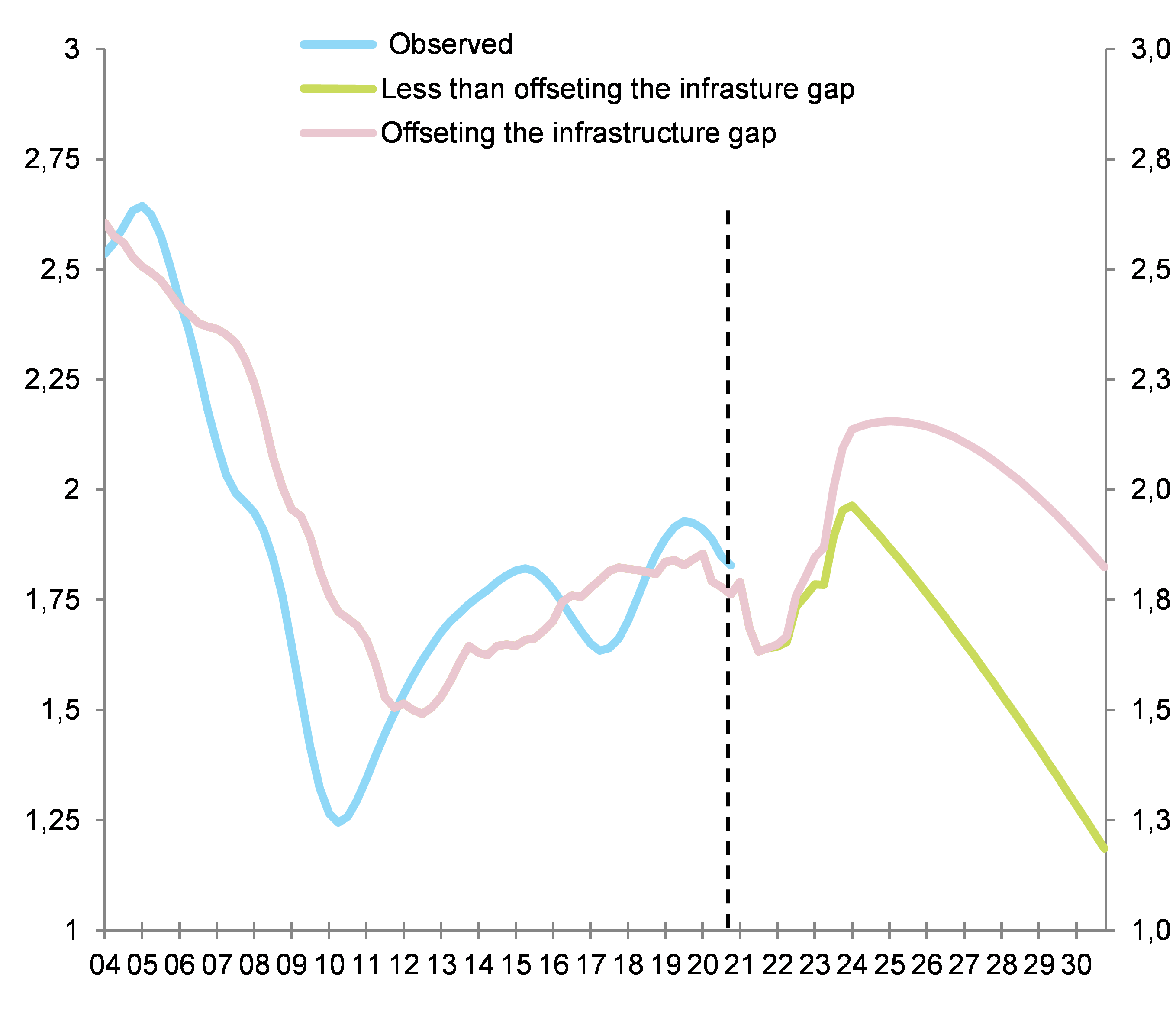Biden’s USD2.3trn ‘Build Back Better’ infrastructure plan (see annex 1 for details) represents the second stage of a three-phase stimulus rocket and will be a long-term driver of growth in the US. We expect the infrastructure investments to postpone the inexorable decline of the US economy’s growth potential, maintaining it above +1.8% y/y at the horizon of 2030 (vs. around 1.4% y/y without the infrastructure plan). Following the first level of stimulus implemented in 2020 and early 2021 (in total USD5trn between the CARES Act, Covid Relief Package and the American Rescue Plan), we now expect the total supplementary public spending in the US to top USD1.1trn in 2021. As a result, our central scenario forecasts GDP growth of +5.3% y/y in 2021, followed by +3.8% in 2022. However, if Biden manages to pass the third phase of the stimulus rocket (focused on education, childcare and healthcare and estimated at between USD1trn-USD2trn, to be announced in the coming weeks), US GDP growth could reach +6.5% y/y in 2021 and +4.5% y/y in 2022 (see Figure 1). For now, we expect the size of the total stimulus to be constrained by tough negotiations, even with moderate Democrats, over increasing taxes on the wealthiest households and corporates to finance higher public spending. The third phase of Biden’s plan is therefore not included for the moment in our central scenario.
Figure 1 – GDP growth (y/y) impact of Build Back Better program (with and without the USD1.5trn of supplementary spending in healthcare, childcare and education)
Figure 1 – GDP growth (y/y) impact of Build Back Better program (with and without the USD1.5trn of supplementary spending in healthcare, childcare and education)









